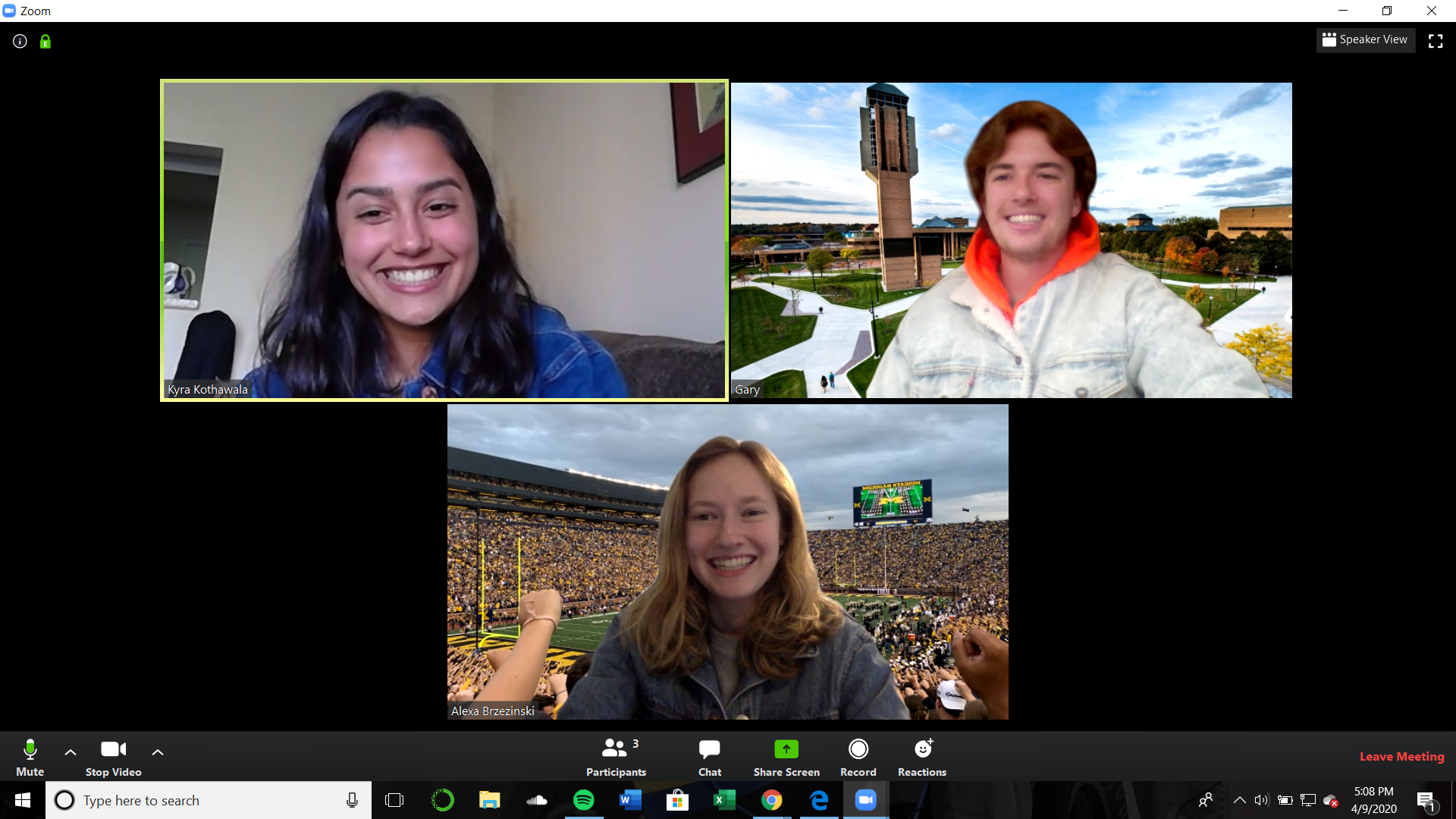This week is a pivotal one for the University of Michigan (U-M) Mechanical Engineering (ME) undergraduate students. In a normal semester, it is time to put the finishing touches and conduct tests on their semester-long team projects in ME 250 and ME 350. It all culminates during the U-M ME Undergraduate Symposium (MEUS) where they meet in the BorgWarner Galleria of GG Brown for a showdown of machines and what always proves to be a solid demonstration of problem-solving.
When making the move from a very hands-on style class to virtual learning, there are definitely going to be challenges. “The biggest challenge was ensuring that we could still provide our students with a good educational experience, even when they were not able to complete their builds. Our instructional teams have done a fantastic job in a short time, by creating assignments involving simulations and analysis,” said U-M ME Lecturer Mike Umbriac.
Both ME 250 and ME 350 benefit from a great group of graduate student instructors and instructional assistants (GSIs and IAs) who came together to remake the classes in their online format. “When the change to remote instruction was being considered, our ME 250 and ME 350 instructional teams looked at our course objectives to see which ones had already been completed, and which ones still needed to be addressed,” Umbriac said, “By the time we went to remote instruction, the students had already completed their machine shop training, mill and lathe exercises, and ME 350 linkage builds, assisted by U-M ME Instructional Lab Manager Don Wirkner and techs Charlie Bradley and Jon Yenkel.”
Traditionally, ME 250 consists of students being split into teams of four, and are tasked with building a remote-controlled machine that can move blocks, overcome obstacles, and compete in a relay competition against other teams. They learn engineering drawing in CAD, the manufacturing process, and work with tools such as laser and water jet cutters.
In moving to remote classes a lot had to be changed, but Umbriac, along with Professor Dan Cooper, Professor Shorya Awtar and their teams of instructors, have made it work. “We modified all remaining milestones to teach the same critical thinking skills the students would have learned through building the physical prototypes, by using virtual means instead,” said Umbriac. “The students are creating engineering drawings and manufacturing plans, and an exploded view and assembly plan using CAD or hand drawings.”
This isn’t quite the machine showdown students are used to but they are still learning valuable tools as they continue on their degree path. Umbriac shared some of the benefits of their remote work, “Spending less time on physical builds also meant that the ME 250 students were able to focus more on design changes that would be needed for mass production, which is a concept that we wanted to emphasize more anyway.”
Regan Bullister, ME 250 IA explained, “Thinking critically about the objectives of this course and figuring out how to best adapt it for the students has been a really interesting learning experience in itself and definitely not something I expected to happen in my first semester as an instructor. I’ve talked to a few of my students in my online office hours and they all said they were happy with the way the course has been reconfigured, although we are all sad we can’t build the physical product, they’re glad the ME 250 team has been accommodating to changing student needs.”

In ME 350, students also work in teams of four to design, build, and test a four-bar linkage to automatically position a flashlight to shine onto targets. The projects are shown off at MEUS where they demonstrate the motor and transmission moving the linkage, limit switches to calibrate the linkage position, infrared proximity sensors to detect targets, and an encoder to keep track of the position.
The virtual assignments consist of Remote Lab Modules that include simulations of the linkage’s motion in MATLAB, a sensitivity analysis of their motor, and answering questions usingTinkercad, which allows them to run simulations on a circuit containing sensors, motors, and a motor driver.
“As we worked to develop these Remote Lab Modules, we tried to preserve as much of the learning content students gain from the hands-on project-based experience as possible,” said ME 350 GSI Joseph Saginaw. “This meant utilizing software tools students might use in industry, keeping the context of the modules familiar by revisiting aspects of the design of their project in a digital manner, and incorporating the development of skills that students will need later in both ME 450 and their future careers.”
Another ME 350 IA, Karthik Urs said, “During this pandemic, I also hope students are taking note of the impact they can have as professional mechanical engineers in the future — we’re seeing many of our Michigan ME alumni stepping up to engineer solutions in this crisis by designing and manufacturing medical equipment such as ventilators and masks to help our medical professionals.”
The group of classes, ME 250, 350 and 450 are core classes in the U-M ME degree path, and for this semester it goes without saying the U-M ME team has done a great job in preserving the integrity of that.
We send a big thank you to the ME 250 and ME 350 Graduate Student Instructors and Instructional Assistants who made that possible: Joe Saginaw, Minna He, Karthik Urs, Deepak Sharma (Design Instructional Engineer), Sean Mudge, Mitchel Huang, Jackie Schmiedeler, David Mark, Yongxian Zhu, Regan Bullister, and John Burke. They worked on developing and testing out these new assignments.
